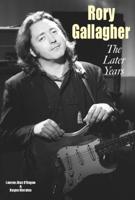Publisher's Synopsis
Excerpt from The Ampleforth Journal, Vol. 24: July, 1918
Yet the anglo-saxon Church that Sprang from the teaching of St Augustine and his successors became definitely and unmistakably Roman. The peaceful penetration of the Roman missionaries with their ordered system of liturgy pro duced its natural result. Doubtless their pagan converts had no prepossessions; but even the sturdy opposition of the old British Church would seem to have yielded. The liturgy of this island thus became in all essentials Roman. We say in all essentials, because it was characteristic of those times to allow a considerable variety of local usage on minor points. Diocese differed from diocese in ritual, for bishops enjoyed and exercised large powers of selection. And this is true, not only of England, but of the whole Church of that and several subsequent centuries. Uniformity was not attempted, and perhaps was not possible, until the era of printed missals.
With the Conquest came a powerful in?uence from across the Channel, and the settling of Norman ecclesiastics in English sees. It was natural that they should bring with them, and introduce into England, the liturgical customs of their continental home. But on one point we should be quite clear: they did not introduce a new rite. They, no less than the anglo-saxon, used the Roman Rite. What then had become of the Gallican Rite E' It was by this time practically extinct - Charlemagne had seen to that - and survived only, if at all, in the abundant varieties of local practice, so character istic then as afterwards of the French Church. The Norman Conquest, therefore, brought no change of rite, but did bring many small changes of ritual. It is dangerous here to speak too definitely; but, if we said that it introduced into England the Use of Rouen (the great Norman sanctuary), we should not convey a very false impression.
About the Publisher
Forgotten Books publishes hundreds of thousands of rare and classic books. Find more at www.forgottenbooks.com
This book is a reproduction of an important historical work. Forgotten Books uses state-of-the-art technology to digitally reconstruct the work, preserving the original format whilst repairing imperfections present in the aged copy. In rare cases, an imperfection in the original, such as a blemish or missing page, may be replicated in our edition. We do, however, repair the vast majority of imperfections successfully; any imperfections that remain are intentionally left to preserve the state of such historical works.









